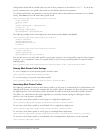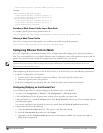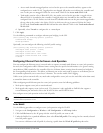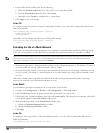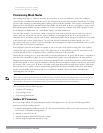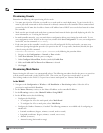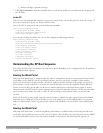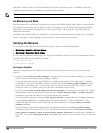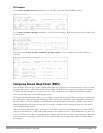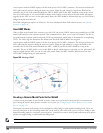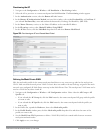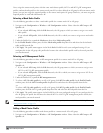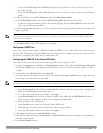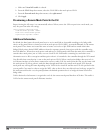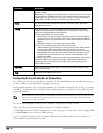
CLI Examples
Use the show ap mesh active command to verify all nodes are present and that EIRP is correct:
Use the show ap mesh topology command to verify the cluster topology, RSSI in presence of network traffic, and
Tx and Rx rates.
Issue the command show ap mesh neighbors ap-name <name> to verify visibility of other mesh nodes is as
expected:
Configuring Remote Mesh Portals (RMPs)
You can deploy mesh portals to create a hybrid mesh/remote AP environment to extend network coverage to remote
locations; this feature is called remote mesh portal, or RMP. The RMP feature integrates the functions of a remote
AP (RAP) and the Mesh portal. As a RAP, it sets up a VPN tunnel back to the corporate switch that is used to
secure control traffic between the RAP and the switch.
The Remote Mesh Portal feature allows you to configure a remote AP at a branch office to operate as a mesh portal
for a mesh cluster. Other mesh points belonging to that cluster get their IP address and configuration settings from
the main office via an IPsec tunnel between the remote mesh portal and the main office controller. This feature is
useful for deploying an all-wireless branch office or creating a complete wireless network in locations where there is
no wired infrastructure in place.
When the client at the branch office associates to a virtual AP in split-tunnel forwarding mode, the client’s DHCP
requests are forwarded over a GRE tunnel (split tunnel) to the corporate network. This communication is done over
a secure VPN tunnel. The IPs are assigned from the corporate pool based on the VLAN tag information, which helps
to determine the corresponding VLAN. The VLAN tag also determines the subnet from which the DHCP address
has assigned.
DellPowerConnectW-SeriesArubaOS6.2 | User Guide SecureEnterpriseMesh | 471



